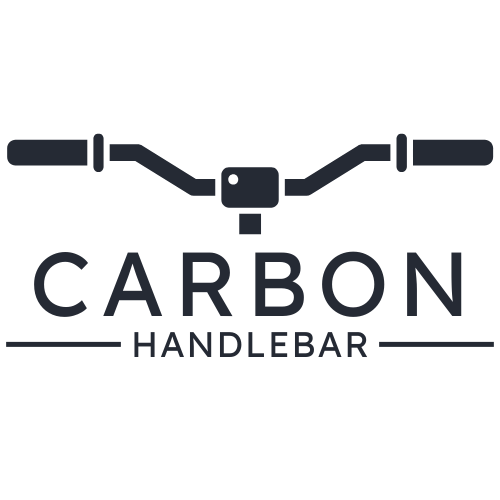In the world of cycling, carbon handlebars have become increasingly popular due to their unique combination of lightness, strength, and performance-enhancing attributes. However, the rise in their usage has also led to various misconceptions surrounding their safety and reliability. In this article, we delve into the facts and fiction about carbon handlebar safety, backed by insights from engineers and material specialists.
Fact: High Strength-to-Weight Ratio
One of the most compelling reasons cyclists choose carbon handlebars is their superior strength-to-weight ratio. Carbon fiber offers high tensile strength while being significantly lighter than traditional materials like aluminum. This means that riders can enjoy a more responsive bike without compromising structural integrity. Manufacturers design carbon handlebars to be lightweight yet capable of withstanding significant stress during rides.
Fiction: Carbon is Fragile
A common belief is that carbon is inherently fragile. While it is true that carbon can be susceptible to impacts, the premise is oversimplified. Many modern carbon handlebars are engineered to be incredibly durable. Advanced layering techniques and the use of high-quality carbon fibers have substantially improved their impact resistance. Proper engineering practices ensure that these handlebars can absorb shocks effectively without compromising strength.
Fact: Engineering Advances
Recent advancements in carbon fiber technology have revolutionized the design of carbon handlebars. Engineers are continuously improving the material’s performance through better construction methods and composite materials. These innovations lead to increased robustness and a reduction in the likelihood of failure during normal cycling conditions. This ongoing research is helping to establish carbon fiber as a reliable material in cycling.
Fiction: Carbon Can’t Be Repaired
Another myth regarding carbon handlebars is their supposed irreparability. While it’s true that repairing carbon is more complex than metal repairs, it is not impossible. Skilled professionals can often repair minor damages, extending the lifespan of the component. Technologies such as epoxy resins can be used to fix cracks. Therefore, damaged carbon handlebars do not always necessitate a full replacement.
Fact: Proper Installation is Critical
Safety and performance hinge significantly on the proper installation of handlebars. This includes ensuring the correct torque settings when affixing the handlebars to the bike. Over-tightening or under-tightening can lead to premature failure or inadequate performance. Cyclists should always refer to the manufacturer’s guidelines during installation to guarantee the safety and integrity of the components.
Fiction: All Carbon is the Same
Not all carbon fiber handlebars are created equal. Different manufacturers utilize varying grades of carbon and construction techniques, resulting in distinct performance characteristics. For example, handlebars made from high-modulus carbon fiber may offer better stiffness and strength than those made from standard modulus carbon. Therefore, it is essential for cyclists to research brands and products to determine the best option for their needs.
Fact: Weight Savings Matter
The benefits of carbon handlebars are not merely a marketing gimmick; the lighter weight can indeed enhance cycling performance. A reduction in weight can lead to improved handling and accelerate the rider’s ability to maneuver through various terrains. For competitive cyclists, these weight savings can translate to substantial performance advantages over longer distances.
Fiction: Carbon Handlebars are Too Expensive
While it’s true that carbon handlebars tend to be more costly than their aluminum counterparts, the long-term benefits often outweigh the upfront investment. The combination of performance improvements, enhanced ride quality, and potential weight reductions makes carbon handlebars a worthwhile consideration for serious cyclists looking to upgrade their gear.
Fact: Tension and Compression Properties
Engineers meticulously design carbon handlebars to optimize their tension and compression properties. This careful design ensures stability and responsiveness during use. Riding requires handlebars to withstand not only vertical loads but also lateral stress during cornering, and carbon’s engineered characteristics make it suitable for these applications.
Fiction: Carbon is Only for Racing
The misconception that carbon handlebars are exclusively for racing is limiting. While they are popular among racers, carbon handlebars cater to a wide array of riding styles, from casual commuting to rugged mountain biking. Riders looking for performance benefits can find carbon-equipped bicycles that fit their lifestyle, enhancing their cycling experience, no matter the terrain.
Fact: Testing and Certification
Certified carbon handlebars undergo rigorous testing to ensure they meet strict industry safety standards. Engineers conduct extensive evaluations, including fatigue tests and impact assessments, before they reach the consumer market. This testing ensures that cyclists can trust the products they purchase, knowing that safety is a paramount priority in design and manufacturing.
Fiction: Aesthetic Appeal Over Safety
While it is undeniable that many cyclists appreciate the sleek appearance of carbon components, safety and performance remain the primary considerations in their design. Engineers prioritize building handlebars that not only look good but also perform optimally under varying conditions, ensuring that aesthetics do not come at the cost of rider safety.
Understanding the safety and performance characteristics of carbon handlebars is essential for any cyclist considering an upgrade. By deciphering the facts from fiction, riders can make informed decisions regarding their equipment. As engineering technology continues to advance, carbon handlebars are proving to be a formidable choice for cyclists of all levels, blending safety, performance, and enjoyment on the road and trail.
